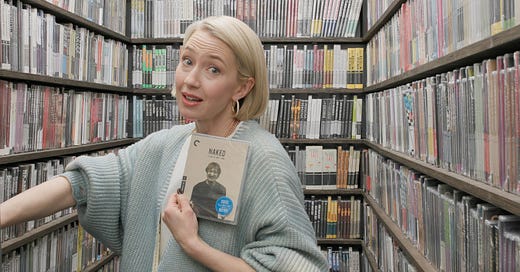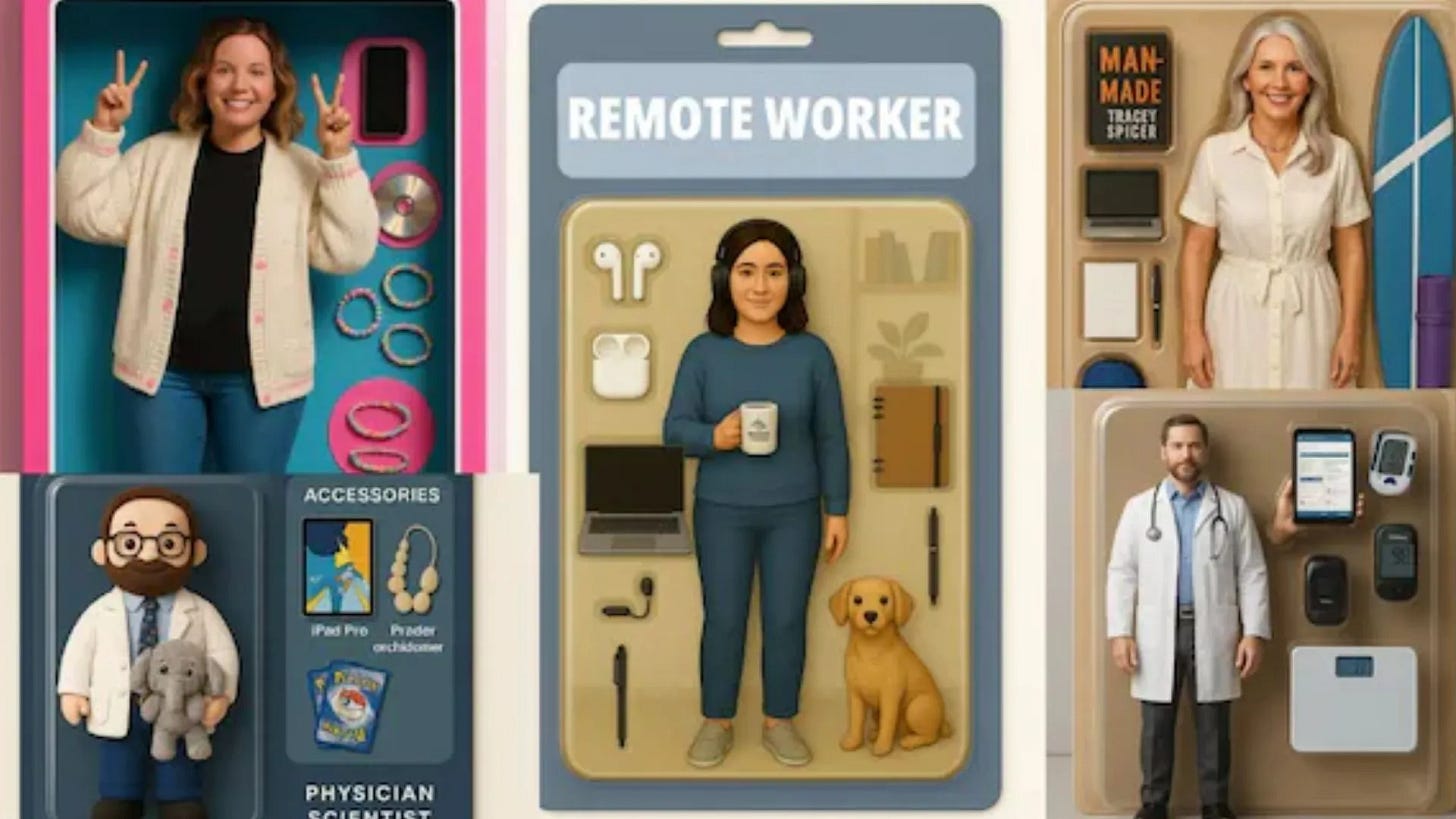Criterion Collection, Good Taste, & AI Slop
How My Childhood Tennis Coach and Criterion Saved Me from Brain Rot
In the age of “AI slop,” I’ve been thinking a lot about what actually makes something pleasurable to watch or read online. You spend enough time on any platform, Instagram, for instance, with the creepy ChatGPT generated barbie doll thing that keeps haunting my feed, or worse yet, LinkedIn, with the same rhetorical question hook and emoji bullet format, and after a few scrolls your brain starts to feel like it’s rotting (hence the aptly named phenomenon brain rot.)
Sure, you can take a break and log off. However, if you have little self control, or if you work in some form of media, that break never lasts long. You come back, and the slop remains, proliferating and ready to latch onto your attention like a leech in a stagnant pond you keep falling into again and again.
I’m guilty of putting slop out into the world myself and people who I love and consider to be brilliant, critical thinkers, do it too. I’m not trying to throw shade or pretend that I’m above AI slop, but I do want to think through how we can all do better.
So what is the antidote?
My bet is on taste.
Miriam Webster has a few definitions, but the one I’m talking about is, “critical judgment, discernment, or appreciation” and relatedly “manner or aesthetic quality indicative of such discernment or appreciation.” Taste is cultivated. Taste takes time. It’s not scraped from the internet or trained on past data. It’s shaped by what you notice, what you sense, what you love, and who teaches you how to see.
I originally decided to write this piece, not to talk about AI, but because I wanted to understand why I loved Criterion Channel’s social media content so much. While I enjoy thinking about marketing and culture because it’s part of my work, I’m not always nerding out on brand strategy off the clock. But I love movies, and I love the “Criterion Closet” series on Criterion’s social channels.
For those who don’t know, the Criterion Channel is a streaming service by the Criterion Collection, “offering a curated selection of classic and contemporary films from around the world.” They started a series where famous actors like Carrie Coon, composers like Hans Zimmer, writers like Jeremy O. Harris and directors like Zeinabu Irene Davis and Ken Burns are placed in the “Criterion Closet.”
There, the artists choose some of their favorite DVDs from a vast archive and explain how these movies influenced them as creatives, or simply, why they like them. The retail store setting, which Zimmer refers to as the “Vatican of Film,” evokes the nostalgia of discovering (or re-discovering) your favorite movies at a Blockbuster (RIP). But more than just offering a list, these artists frame the work. In reflecting on this, I realized that I’d encountered that kind of framing before from an unexpected teacher: my childhood tennis coach, Larry Johnson.
Like many immigrant families, mine didn’t exactly grow up steeped in the American cultural canon. But most of us had some kind of ambassador. It could’ve been a person, a TV show, or a VHS tape passed around like contraband that helped bridge the cultural gap. For my family, that ambassador was Larry Johnson.
We started playing tennis with Larry Johnson in 1998, a few years after he graduated from the Virginia Military Institute—what my parents referred to as a “breeding ground for American gentlemen.” According to my mother, Larry’s father had been Dwight D. Eisenhower’s doctor, his grandfather had a gun collection from the Civil War, and they were all descendants of Patrick Henry. Larry’s blood was as blue as it gets, which made my fresh-off-the-boat, Minksk-born mother obsessed with him. She totally fetishized his background, especially the fact that instead of following his family’s military legacy, he became a pacifist tennis coach in suburban Los Angeles.



But it wasn’t just the all-American halo effect that drew us in. It was the lists. Larry gave my parents handwritten movie recommendations, week after week. A carefully considered syllabus of American and international cinema. Brazil, 8 ½, Roman Holiday, Fargo, True Lies (it was the 90’s after all) are some that come to mind. At eleven years old, I was on my way to becoming a real film aficionado. More importantly, we talked about the movies, either at the dinner table or on the court between serves and rallies.
Criterion’s social media doesn’t just offer content, it offers a lens, a voice, and a feeling that invites thoughtful commentary in a way that echoes what Larry Johnson did for my family all those years ago. It wasn’t enough to just watch the movies. He taught us how to engage with and appreciate them. The goal wasn’t just passive consumption. It was active cultivation of taste, of perspective, and of conversation.
That experience led me to co-run my high school’s film club with my brilliant, now seasoned art historian pal, Kappy Mintie. We screened classics like The Wizard of Oz and indie flicks like Run Lola Run. Over the years, and to this day, I seek out obscure movies to watch in independent theaters across L.A. and New York. In turn, I’ve cultivated my own Leah-specific taste for movies.
Which brings me back to the point: I’m convinced that good taste is how we’ll break free from AI-generated sameness because real taste requires sensing, and sensing requires a body, a context, and a point of view. Taste isn’t just about knowing what’s “good” or popular; it’s about how you’ve been shaped by your family, your friends, your teachers, your heartbreaks, your travels, your obsessions, and the particular, often unexplainable things you notice and respond to. AI doesn’t have personal experience, which is essential for good taste. It can approximate taste by remixing what’s already out there, but it doesn’t experience art or life. It doesn’t long for anything. That’s why the specific and deeply felt curation and creation we do as humans will only become more valuable as the sameness epidemic spreads. Smart marketers and creators already know this and build their social media strategy accordingly.
I’m not in any position to write a manifesto on aesthetic philosophy, but I’m married to a very talented individual who studied architecture and design for like seven years. Through him, and many others, I’ve learned that making time to enjoy art in all its forms and being present and aware of your surroundings are some of the best ways to cultivate your own specific taste. Taking risks, meditating, and spending time in nature helps too (sup,
.)Above all, we need to give artists, curators, historians, and weird little obsessives the support and space to create and curate for us because in a world of slop, taste isn’t just preference, it’s resistance.
And now for my fantasy Criterion Closet picks:
Crossing Delancey - I swear to god this was on my list before Carrie Coon mentioned it!!! I love this movie because it feels very close to my experience of class, immigrants, and living and dating in New York. There’s pickles, there’s romance, and a very adorable Jewish grandmother that reminds me of my own.
Talk to Her - This was the first Pedro Almodóvar film I ever saw, and it’s one of the movies that made me fall in love with cinema. The vivid colors in all of Almodóvar’s movies make you feel like you’re stepping into a painting. The characters—tragic, irreverent, straight out of a telenovela—paired with a plot simmering in surrealism, make for a transcendent couple of hours.
Party Girl - Before White Lotus Parker Posey, there was iconic 90s Parker Posey. She rips apart the manic pixie dream girl trop (a trop I deeply resent) while wearing vintage Jean Paul Gaultier and Vivienne Westwood.
A Room with a View - Adapted from E.M. Forster’s 1908 novel, this film’s flawless screenplay offers a humorous window into the values, absurdities, and contradictions of its era. Daniel Day-Lewis and Maggie Smith deliver epic performances, and the settings in Italy and England were so beautiful, they temporarily cured me of my Emily in Paris addiction.
Black Orpheus - Brazil is one of my favorite places in the world (the people, the music, the energy,) and Black Orpheus captures the spirit of Rio beautifully. The soundtrack for this movie is remarkable and stands on its own.
Kiki’s Delivery Service - Because I adore witches, coming of age movies, and Miyazaki. This movie once pulled me out of an emotional funk like nothing else could, and I’ll be forever grateful.
Tampopo: During the pandemic, my friends and I had a virtual film club, and this was one of the movies we watched. At a time when we couldn’t travel anywhere, Tampopo felt like a trip to 1980s Japan—on acid. I mentioned pleasure at the top of this piece, and this movie explores pleasure in a very entertaining and unusual way.





